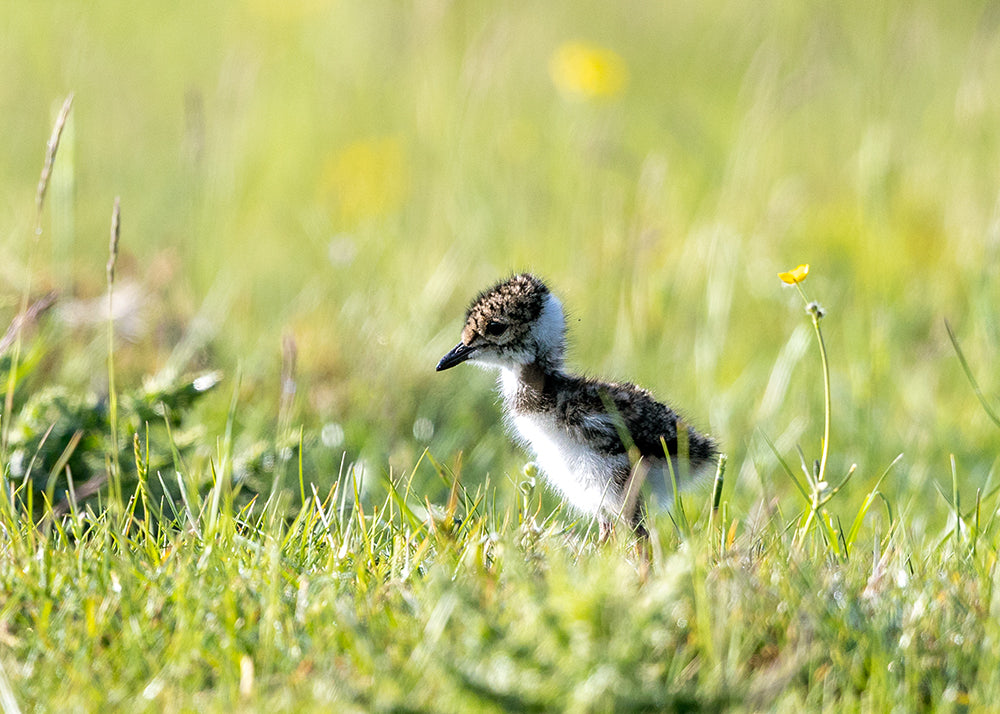9 Wild Wonders to Photograph this Summer

Ground Nesting Drama

Some of our most iconic birds such as the curlew, lapwing and oystercatchers nest on the ground. Often associated as coastal birds it can be surprising to see them inland. Found on our moors, fields, wetlands and for me at least, on our local tennis club roof! (In fact I quite often see oystercatcher nests on flat, industrial building roofs). The majority of ground nests will have hatched by now and once hatched the chicks are up and about pretty much immediately (precocial chicks).
Stick to the paths and explore moors, wetlands and grasslands local to you to watch this flurry of activity as inquisitive fledglings run their parents ragged and predators move in for an opportune moment!
Join me on the next Moorland Nature Walk in July.
Fleeting Orchids

From coastal paths and wild meadows to roadside verges, orchids can and do seem to appear in a number of places. Whether it’s a common spotted or Lady’s Slipper, it’s impossible to spot an orchid and not feel a moment of delight.
These hidden treasures can appear in a variety of places but if you’re looking for some hints, the Wildlife Trusts have a great location resource - https://www.wildlifetrusts.org/where_to_see_orchids - If you’re looking to identify some rarer beauties, this post from the Woodland Trust can help you… https://www.woodlandtrust.org.uk/blog/2019/05/nine-wild-uk-orchids/
Day flying moths

For a number of years now I’ve become a little obsessed with burnet moths. The 6 spotted burnet moth to be precise. In a small public space, surrounded by houses, each summer you’ll find me swallowed up in the grass, taking photos of spectacular day-flying Burnets emerging from their science fiction like cocoons. As if this all wasn’t cool enough, it also produces hydrogen cyanide at every stage of its life!
You can find these VERY cool moths in grassy areas during June/July. Find out more about them on the Natural History Museum site here https://www.nhm.ac.uk/discover/toxic-talents-cyanide-moths.html
Urban Peregrines

By the 1960s, 80% of the UK’s peregrine falcon population was been lost. Today if you walk through any city or town with high rise buildings, you may well be walking under the world’s fastest animal!
Peregrines nest on tall buildings and sheer rock faces (both coastal and inland) and over the summer can be seen regularly bringing in prey for their chicks. Found all over the UK, with a little research you should be able to find peregrines not too far from you, you can even find lots of webcams and enjoy the view from the armchair!
Breathtaking Meadows

Wildflower meadows are the essence of summer. It appears that the beauty and benefit of such habitats has caught on in recent years too, with more and more sporadic and gorilla-like wildflower areas erupting up in all manner of places. From your traditional ancient fields to roadside verges, it’s impossible to pass a wildflower space without feeling a warm glow.
Close-up details, wider landscapes and all the wildlife that they support, wildflower fields offer no-end of photographic possibilities!
If you need inspiration finding one take a look at the Wildlife Trusts’ resource here - https://www.wildlifetrusts.org/where_to_see_wildflower_meadow
Join me in the Yokshire Dales this Summer for the Wildflower Meadow Photo Walk.
Seabird Colony

Seabird colonies in summer really are a spectacular place to experience nature. The sights, sounds and smells will amaze and leave a fond, lasting impression.
Some internet research will likely reveal the big classics like Bempton, Farne Islands, Skomer and more. However heading out to any stretch of coastline is likely to reveal some exciting wildlife watching opportunities. You might want to use this search page on RSPB’s website to find more seabird locations.
Join me this Summer for Bempton Cliffs Photo Walks
Cetacean Watch

Seeing a dolphin or whale is always breathtaking, and sightings of the 25-30 cetacean species found in UK waters have been increasing all over year on year.
While boating trips can offer a specialist and targeted approach, summer is a great time to see our dolphins and whales from land. It’s also a good time to spot new arrivals sticking close to a parent.
The great thing about heading to the coast to spot cetaceans is whether you see one or not, you’re still likely to encounter a plethora of other exciting wildlife. And the more you get out looking, the more you’ll see.
There’s all the classic spots that offer good opportunities to spot dolphins and whales from dry land. Places like Moray Firth, Cardigan Bay, Farne Island, Flamborough, Newbiggin, and many more. Their nomadic lifestyles however can mean they can turn up nearly anywhere.
Another tip is to head to known estuaries at the start of the salmon run where Dolphins feast on the salmon as they approach the river mouth.
Dragons & Damsels

When it comes to dragonflies and damselflies, there’s enough photographic scope to take up the whole of your summer in itself! From dew encrusted portraits to in-flight shots or even a chance encounter as one emerges from the water or even egg laying on weeds close to the surface. You might be surprised at just how urban an environment dragon and damselflies can appear in. A city garden with a pond, local parks, village ponds all stand a good chance of a visit from one of our most exciting insects.
Dragonflies are about for a surprisingly long time and can be see as late as October. Areas with high concentrations of dragonflies also stand a good chance of an exciting visit from a Hobby, one of our most acrobatic falcons!
River Royalty

As the summer progresses, populations of our most iconic river bird increase. With up to 6 chicks per brood and 2-3 broods a year, the rivers can get a bit crowded as the summer comes to a close and it’s one of the best times to enjoy better Kingfisher experiences.
Recently fledged kingfishers can also be relatively tolerant of people and offer even better watching opportunities. The key is to find a good fishing perch and wait silently. Remember that Kingfishers are protected by law and disturbing/chasing them will never result in any meaningful experience.
Conclusion
I hope at least some of these examples inspire you to explore your local patches more this summer. There are of course so many others I could have shared, screaming devil birds (we call them swifts), basking reptiles and more. But I'm sure once you get out, you'll unearth a treasure trove of natural wonders and wildlife spectacles for yourself!




Went on walk today to Upton Fen with Dr Pam Taylor (Norfolk Dragonfly Recorder and Convenor BDS. Saw 8 different species of dragonfly and damselflies. Wonderful
Leave a comment